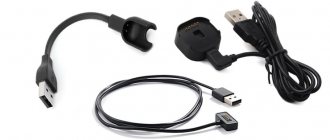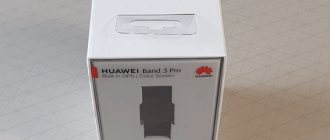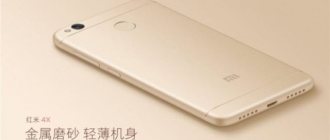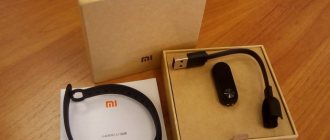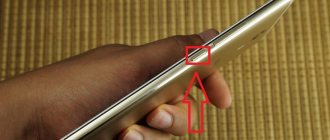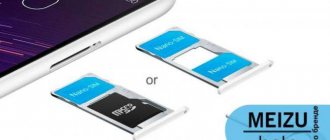Preparatory stage
Before any mechanical manipulations with your smartphone, be sure to turn it off. This will prevent accidental key presses and protect the system during sudden battery disconnection.
The back cover of Meizu devices is attached to a special hot-melt adhesive. Therefore, before starting the procedure, it is recommended to slightly warm the body with a hairdryer to warm it up. This must be done very carefully - high temperatures can damage individual parts.
Please note that you will need the hot melt glue itself after this. If you want to reattach the device panel, carefully coat it and press the part tightly for a few seconds.
Detailed review of Meizu M3 Note
Meizu Technology Co., Ltd. or simply " Meizu " is a Chinese digital electronics company based in Zhuhai, Guangdong Province, China. Meizu is also among the top ten manufacturers in China. And it received wide recognition in European countries after the presentation of the Meizu MX 2 smartphone. This monster became simply the crowning achievement of Meizu Technology, after a dozen unsuccessful attempts to expand beyond China.
MX models; they also have a far worse M .
Which in April 2021 was replenished with another model called: M3 Note, we were all waiting for it with impatience after we got acquainted and played enough with the younger brother Meizu M2 Note. Its sales, according to the manufacturer, have amounted to more than two tens of millions of devices since last summer. Meizu obviously expects that the M3 Note smartphone will, if not surpass, then at least repeat the success of its predecessor. Specifications Meizu M3 Note
- Model: M3 Note (M681H)
- OS: Android 5.1 (Lollipop) with Flyme OS 5.1.3.1G shell
- Processor: 64-bit MediaTek Helio P10 (MT6755), ARMv8 architecture, 8 cores ARM Cortex-A53 (4x1.8 GHz + 4x1.0 GHz)
- Graphics coprocessor: ARM Mali-T860 MP2 (550 MHz)
- RAM: 2 GB/3 GB LPDDR3 (933 MHz, single channel)
- Storage: 16 GB/32 GB, eMMC 5.1, microSD/HC/XC memory card support (up to 128 GB)
- Interfaces: Wi-Fi 802.11 a/b/g/n (2.4 GHz + 5 GHz), Bluetooth 4.0 (LE), microUSB (USB 2.0) for charging/syncing, USB-OTG, 3.5 mm headphone jack
- Screen: capacitive touch, IPS LTPS (Low-Temperature Polycrystalline Silicon) matrix, GFF (full lamination), 5.5-inch diagonal, resolution 1920x1080 pixels, pixel density per inch 403 ppi, brightness 450 cd/sq. m, contrast ratio 1000:1, protective glass NEG 2.5D T2X-1
- Main camera: 13 MP, PureCel matrix, OmniVision OV13853, optical size 1/3.06 inches, pixel size 1.12 microns, Corning Gorilla Glass 3, 5-element lens, f/2.2 aperture, phase detection (PDAF) autofocus, dual two-color flash, video [email protected]
- Front camera: 5 MP, BSI sensor, Samsung S5K5E8 or OmniVision OV5670 PureCel, optical size (1/5 inch), 1.12 µm pixel size, 4-element lens, f/2.0 aperture
- Network: GSM/GPRS/EDGE (900/1800/1900 MHz), WCDMA/HSPA+ (900/2100 MHz), 4G FDD-LTE (1800/2100/2600 MHz)
- SIM card format: nanoSIM (4FF)
- Slot tray configuration: nanoSIM + nanoSIM, or nanoSIM + microSD/HD/XC
- Navigation: GPS/GLONASS, A-GPS
- Sensors: accelerometer, gyroscope, compass, Hall sensor, light and proximity sensors (infrared), fingerprint scanner
- Battery: non-removable, lithium polymer, 4,100 mAh
- Colors: dark grey, silver, gold
- Dimensions: 153.6x75.5x8.2 mm
- Weight: 163 grams
Design, ergonomics
When creating the M3 Note, the designers seem to have taken their inspiration from Meizu's older models from last year, in particular the MX5 and Pro 5 smartphones.
Thus, for the manufacture of the all-metal body of the new product, also known as unibody, we chose an aviation aluminum-magnesium alloy of the 6000 series.
To prevent the smartphone antennas from being shielded by metal, two inserts made of radio-transparent material were provided, separating them from the aluminum alloy with raised strips. The dimensions of the new product have not changed very significantly compared to the M2 Note - 153.6x75.5x8.2 mm versus 150.7x75.2x8.7 mm. Well, the weight has predictably increased due to the more capacious battery - 163 g versus 149 g.
Let us remind you that in its predecessor they were content with glossy colored plastic for the body and only matte polycarbonate was used for the gray color.
At the time of testing, two color options for the anodized coating of the M3 Note cases were offered for sale: silver (with a black or white front panel) and gray (with a black or white front panel).
The entire front surface of the M2 Note, including the screen, is covered with protective glass, which was chosen as Dinorex 2.5D T2X-1 from Nippon Electric Glass (NEG).
The 2.5D effect consists of a smooth “rounding” of this glass along the perimeter of the front panel.
Above the display, with traditionally narrow side frames,
The speaker grille is located, surrounded by the front camera lens (on the left), light and proximity sensors, and an LED indicator (on the right). The latter does not seem to be used by the standard smartphone tools.
Below the display there is a mechanical key with a built-in fingerprint scanner mTouch 2.1, which looks very similar to mBack, which first appeared in the M2 Note smartphone. From the latter it also inherited its basic functionality. So, a normal touch (tap) of this button activates the “Back” function, a short press with a hardware “click” returns to the main screen (“Home”), and a long press (and hold) turns off the screen backlight. But the “Recent Applications” button is replaced by swiping up from the bottom edge of the display. After a short period of getting used to, this control scheme becomes very convenient.
On the right edge, in a small recess, there is a volume rocker and a power/lock button.
The left edge is occupied by a closed slot with a double tray, which can accommodate either two subscriber identification modules of the nanoSIM format, or the place of the second one will be taken by a microSD memory expansion card. To open the combination tray lock, you will need a special tool. As before, a thin paper clip can be used as it. Unfortunately, during the production of the device (at least our test unit), the size of the tray and the slot for it were not adjusted perfectly, as a result of which the tray rattles slightly if you shake the smartphone.
The hole for the second microphone (for noise reduction and sound recording) and the 3.5 mm audio headset connector remain on the top end.
The microUSB connector between two mounting screws at the bottom end is framed by decorative grilles (four round holes in each). At the same time, a “conversational” microphone is hidden under the left, and a “multimedia” speaker is hidden under the right.
On the rear panel, the first thing that catches your eye are the relief strips separating the metal from the radio-transparent plastic,
and just like the Pro 5, the stylized Meizu logo is moved closer to the main camera lens and dual two-color LED flash.
Despite the 5.5-inch screen diagonal, the new smartphone, like the M2 Note, is comfortable and easy to hold in your hand.
In addition, the slightly rough surface of the metal rear panel is pleasant to the touch.
Screen, camera, sound
The M3 Note screen uses a 5.5-inch IPS matrix, on which, with a resolution of 1920x1080 pixels (Full HD) and a widescreen aspect ratio of 16:9, the pixel density per inch according to the passport is 403 ppi. LTPS (Low Temperature Poly Silicon) technology is used for its manufacture, since replacing amorphous silicon with polycrystalline silicon ultimately allows for wider viewing angles (up to 178 degrees), a better color palette, lower power consumption and response time. In turn, the GFF (Glass-to-Film-to-Film) full lamination technology eliminates the air gap between the display layers, which serves as the basis for good anti-glare properties and reduces the reflection effect. Let us remind you that the entire front panel, including the screen, is covered with NEG 2.5D Dinorex T2X-1 protective glass. They didn’t forget to apply an oleophobic coating to it, which, unlike that used for the M2 Note, is more effective (the glass is very easy to clean and your finger glides over the surface without problems).
Thanks to support for MiraVision 2.0 technology, which balances the best display and power consumption, screen brightness and colors are adjusted dynamically depending on lighting conditions. By the way, the declared contrast is 1000:1, and the maximum brightness is 450 cd/sq.m. At the same time, it is proposed to regulate the backlight level in a fairly wide range, either according to your own understanding, manually, or automatically (“Auto-tuning” option), based on information from the light sensor. Multi-touch technology allows you to process up to ten simultaneous clicks on a capacitive screen, which is confirmed by the results of the AntTuTu Tester program. The settings also add the ability to adjust color temperature, so you can make the colors warmer or, conversely, cooler to suit your taste. Along with large viewing angles, a fairly high-quality anti-reflective coating is provided, so that even in the bright summer sun the image remains readable.
The main camera of the M3 Note has a 13-megapixel BSI matrix (OmniVision OV13853 PureCel, optical size 1/3.06 inches), as well as dual two-color LED flash with different color temperatures. The camera lens with 5-element optics, covered with Corilla Glass 3, has an f/2.2 aperture and fast (0.2 s) phase detection autofocus. The maximum image resolution is achieved with an aspect ratio of 4:3 and is 4208x3120 pixels (13 MP). Examples of photos can be seen here.
The front camera has a 5-megapixel BSI sensor (Samsung S5K5E8 or OmniVision OV5670 PureCel, 1/5-inch optical size) equipped with a wide-angle 4-lens lens with f/2.0 aperture. But autofocus and flash are missing here. The maximum image size in the classic aspect ratio (4:3) is 2592x1944 pixels (5 MP).
Both cameras can record video in Full HD quality (1920×1080 pixels) with a frame rate of 30 fps, while the content is saved in MP4 container files (AVC - video, AAC - audio).
The interface of the Camera application in the M3 Note, compared to that of its predecessor, has been slightly improved, but the main features have changed little. The modes “Auto”, “Manual”, “Portrait”, “Panorama”, “Change focus” and “Slow motion” (4 times, resolution 640x480 pixels, up to 60 minutes) remain in place. At the same time, having removed the “Scanner”, they added “Macro” and “GIF” (up to 6 minutes of animation). In the settings, you can select the HDR mode, as well as decide on the photo size and video quality. Shooting in manual mode (M) involves adjusting the parameters of shutter speed, ISO, exposure compensation, saturation, white balance, etc. By activating the appropriate option, focus and exposure can be measured separately. In addition, there are almost a dozen image filters at your disposal. It’s convenient to switch the viewfinder from the main camera to the front camera and back using vertical swipes. But the volume rocker (both increasing and decreasing) is also proposed to be used to release the shutter. The manufacturer notes the role of the ISP TrueBright image processor, which allows you to take pictures in low light brighter and clearer. However, even the main camera can hardly boast of special shooting quality in such conditions.
Not only in the placement of the “multimedia” speaker grille, but also in its acoustic capabilities, the M3 Note is practically no different from its predecessor. The standard smartphone tools still allow you to listen to audio files, for example, with FLAC extensions, created by codecs for compressing audio data without loss of quality. After connecting an audio headset, you are offered to use a 5-band equalizer with presets and manual settings. Unfortunately, the device does not have a built-in FM tuner. The simple “Dictaphone” makes fairly high-quality monophonic recordings (44.1 kHz), which it stores in MP3 files.
But with playing music via Bluetooth, a small problem emerged - clicks that occur when you take the smartphone in your hand or move it on the table. Apparently, the reason is insufficient shielding of the audio path from static electricity on the case.
Filling, performance
If the M2 Note relied on the 64-bit MediaTek MT6753 platform with eight ARM Cortex-A53 cores (1.3 GHz), then for the M3 Note they chose the first-born from the MediaTek Helio P10 family of mid-range chipsets (aka MT6755), designed for according to the manufacturer, for thin smartphones.
This chip is based on an 8-core processor, where four ARM Cortex-A53 cores are clocked at up to 1.8 GHz, and four more at up to 1.0 GHz. At the same time, the 2-core ARM Mali-T860 MP2 (550 MHz) architecture with support for OpenGL ES 3.2 and OpenCL 1.2 is used as a graphics accelerator. The MT6755 chip is manufactured using the new TSMC 28HPC+ (28 nm) process technology, which, according to the manufacturer, has reduced power consumption by 30-35% compared to chips produced in compliance with the “old” 28HPC design standards. In addition, increasing energy efficiency while maintaining sufficient computing power is achieved by automatically adjusting the frequencies of the processor and video accelerator. Helio P10 can work in LTE-TDD, LTE-FDD Cat networks. 6 (300/50 Mbit/s), HSPA+, TD-SCDMA, EDGE, etc., and is also equipped with Bluetooth 4.0 LE and 2-band Wi-Fi interfaces. Among the other MediaTek MT6755, in addition to MiraVision 2.0, it is worth noting the load optimizer for processor cores CorePilot and the heart rate monitoring system (using the camera built into the smartphone) Heart Rate Monitoring.
The basic configuration of the M3 Note is supplemented by LPDDR3 (933 MHz) RAM, which is controlled by a single-channel controller. Note that the smartphone variants with 16 GB or 32 GB of internal storage (eMMC 5.1) have 2 GB or 3 GB of RAM, respectively. We received a device with a 2 GB/16 GB combination for testing. Judging by the published data, the Helio P10’s performance successfully competes with the Qualcomm Snapdragon 615/616 chipsets, which does not contradict the results of the tests performed.
The number of “virtual parrots” obtained on the synthetic benchmark AnTuTu Benchmark was obviously predetermined by the selected hardware platform.
The efficiency of using the processor cores (Geekbench 3, Vellamo) of the new smartphone looks quite optimistic, but the estimate of the amount of “horsepower” is not so positive.
On the Epic Citadel visual test settings (High Performance, High Quality and Ultra High Quality), the average frame rate changed as follows - 60.1 fps, 59.8 fps and 41.5 fps, respectively.
On the universal gaming benchmark 3DMark, where the Meizu M3 Note was tested on the recommended Sling Shot set (ES 3.1), a rather modest result of 326 points was recorded. If problems are unlikely to arise with simple games, then in “heavy” games (Asphalt 8: Take Off, World of Tanks Blitz) it is better to limit yourself to medium settings.
In turn, the total number of points scored by the smartphone on the cross-platform benchmark Base Mark OS II was 986.
Of the 16 GB of declared internal memory in the tested model, about 14.56 GB are available, and approximately 9.6 GB are free. At the same time, like the M2 Note, to expand the available storage, it is possible to install a microSD/HC/XC memory card with a maximum capacity of up to 128 GB. True, the dual tray into which the memory card is inserted is universal, and if you take up one place in it, you will have to sacrifice the installation of a second SIM card (nanoSIM format). By the way, you can also expand the built-in memory thanks to the support of USB-OTG technology by connecting an external drive.
Similar to its predecessor, the M3 Note's set of wireless communications also includes a dual-band Wi-Fi module 802.11 a/b/g/n (2.4 and 5 GHz) and Bluetooth 4.0 (LE).
When two nanoSIM cards (4FF format) are installed, one radio channel of the device operates with them in Dual SIM Dual Standby mode, in other words, both SIM cards are active, but when one is busy, the other is unavailable. Both trays in the slot support 4G, while the SIM card for data transfer, as well as the priority network mode, is selected in the corresponding menu. Unfortunately, only two “Russian” FDD-LTE bands are available – b3 (1,800 MHz) and b7 (2,600 MHz). But the most “disruptive”, low-frequency b20 (800 MHz), as before, remained “overboard”. The manufacturer especially emphasizes support for the promising VoLTE (Voice over LTE) technology.
The built-in multi-system receiver uses GPS and GLONASS satellites for positioning and navigation, as confirmed by the results of the AndroiTS GPS Test and GPS Test programs. There is also support for A-GPS technology (coordination over Wi-Fi and cellular networks).
The volume of the lithium-polymer battery equipped with the M3 Note (4,100 mAh), compared to its predecessor (3,100 mAh), has increased quite significantly - by about 32% (1,000 mAh). Despite this capacity reserve, the body of the new smartphone has become 0.5 mm thinner. There is no support for fast charging here. The smartphone comes with a power adapter (5 V/2 A). It will take about 2 hours to fill the battery to 100% from a level of 15-20%.
We managed to earn an impressive 8,778 points in the AnTuTu Tester battery tests. While the M2 Note was limited to 6,289 points here. When the battery is 100% full, the manufacturer promises up to two days of operation in active mode, or up to 17 hours of watching videos, or up to 36 hours of listening to music. A test set of videos in MP4 format (hardware decoding) and Full HD quality at full brightness played continuously for almost 9.5 hours.
In the “Power Management” settings section, depending on the expected load, you can force the smartphone to switch from “Balanced” mode to “Energy Saving” or “Productive”. In addition, the “Power Consumption Optimization” section suggests not only managing the sleep mode of applications, but also taking advantage of flexible settings to save battery power – “Smart”, “Super” and “Custom”.
Software Features
The M3 Note smartphone runs on the Android 5.1 (Lollipop) operating system, the interface of which is hidden under the proprietary Flyme OS 5.1.3.1G shell. It should be noted here that in the latest versions of Flyme firmware, including the one mentioned above, the first launch of the Google Play application store (creating a Google account) must be performed on a smartphone with a SIM card installed. This additional device authorization has become one of the new security requirements.
All program shortcuts, folders and widgets in the Flyme launcher are placed directly on the desktop. Swiping down opens the quick settings panel (where a brightness adjustment slider now appears), and swiping up opens recently opened applications.
In the "Special" section capabilities”, as before, possible smartphone control gestures are collected, including the SmartTouch control “ring” (not shown in the screenshot) with adjustable transparency.
The new version of the shell has the ability to split the screen to simultaneously display the work of two applications, however, so far this only applies to the “Settings”, “Video” and “Maps” programs.
Using up to five fingerprints captured on the fast (0.2 second) mTouch 2.1 fingerprint scanner, you can lock not only the screen, but also access to files and applications.
The M3 Note has a minimal set of software installed. From this software, you can highlight a collection of utilities for regular smartphone care, collected in the “Security Center” (virus scan, garbage removal, memory cleaning, energy saving management, etc.), as well as practical tools from the “Useful” application ( “Mirror”, “Flashlight”, “Ruler”, etc.).
Purchase and conclusions
Improvements in Meizu M3 Note , compared to its predecessor M2 Note, affected not only the replacement of plastic with aluminum alloy, but also the functionality of the filling. Now the smartphone, which can be equipped with 3 GB of RAM and 32 GB of internal memory, uses a new processor, has significantly increased battery capacity, and has also added a fast fingerprint scanner. In addition, both trays in the slot support not only LTE technology, but also VoLTE. At the same time, they managed to keep the price of the M3 Note quite attractive: $127 for the 2 GB/16 GB version and $157 for 3 GB/32 GB (RAM/built-in memory, respectively) - Current price
By using cashback you have the opportunity to save up to 10% on the purchase of goods - CASHBACK
How Meizu opens
Different models of the brand: M3, M5, M6, Note series U10, U20, etc. differ from each other in case material: for most devices it is plastic (M5, M5S, M6, M3S, etc.) for some modern phones are metal (M3 Note, U10, etc.). You can only remove the cover from plastic smartphones, since metal ones have a solid body. If you lift the panel, it will no longer be possible to put it back in place - you will have to buy a new part and contact a service center.
So, to open the plastic gadget, follow these steps:
- Turn off your device.
- Remove the SIM card tray.
- Find two screws that secure the cover on the bottom end of the device next to the speaker grilles and unscrew them.
- Gently warm the case with a hairdryer.
- Place a suction ring on the display to separate it from the back panel. Pull gently to lift the part.
- Insert a plastic card into the gap between the screen and the cover to completely separate them.
How to update the firmware on Meiza
Meizu smartphones are based on proprietary Flyme firmware. She receives regular updates. There are two ways to install the latest OS version:
- by air;
- via a separate file.
The first option is the main and most preferable. To check the availability of the latest firmware, you need to go to the “System Update” settings section.
If an update is available, a notification will appear on the screen. The user will only have to click the “Update” button and wait for the installation to complete. During the process, the smartphone will reboot, after which it will be ready for further use.
An alternative method involves manually downloading updates from the official website flymeos.com. Go to the main page, select the firmware for your model and download it to your phone. Next, all you have to do is open the downloaded zip file and confirm the start of the installation.
The whole process takes approximately 10-15 minutes. There is no need to disturb your phone while installing the firmware. Wait for it to reboot.
Before installing updates, it is recommended to charge your smartphone to at least 50%, and also perform a factory reset.
What's inside
The Meizu filling also differs depending on which line the gadget belongs to. One of the main parts - the motherboard - is created using a special technology from 10 layers of material. This allows you to reduce its dimensions and increase reliability.
To remove the board, you need to unscrew 3 screws on the metal plate, and then more screws on the plastic panel. This part is located next to the camera to protect the modules from mechanical damage. Finally, remove the remaining screws that connect the motherboard to the display.
How to set up a fingerprint scanner
Some Meizu models are equipped with a fingerprint scanner. This is a mechanism that allows you to protect your smartphone from intruders. Typically, the scanner is positioned in four ways:
- in the "Home" button;
- on the side;
- on the back panel;
- in the display.
The most modern option is an in-screen scanner, like on the Meizu 16th. But regardless of where the sensor is installed, its configuration is always the same.
The user can set his fingerprint already at the first turn on. If this is not done, you need to follow the instructions:
- Open settings.
- Go to the "Security" section.
- Press the “Finger Identification” button.
- Place your finger on the scanner several times, following the prompts on the screen.
All. Now the fingerprint is configured and the smartphone is completely protected. Additionally, you can set several more fingerprints so that one or more people can gain access.
Why is this necessary?
Disassembling an Android smartphone is necessary in case of replacing the display, back cover, etc. Most service centers provide a guarantee for the work, but it does not always make sense to overpay. For example, anyone can replace the display, cover, or battery while following safety precautions. If the damage to the device is associated with smaller and less obvious parts, it is recommended to contact a specialist.
Welcome
Page 2
- Image
- Text
Welcome!
New generation smartphone
Meizu M3 Note
designed so that you
could use it with joy and comfort.
Smartphone users can visit the official Russian-language MEIZU website: www.mymeizu.ru
On our official website you can download the software,
updates and firmware, participate in discussions, read a lot of useful tips and much more!
Since the company is constantly improving its devices, characteristics, o
which you will read in this manual may differ from the current actual characteristics of the smartphone. Follow the updates on our official website.
How to open the cover of a Meizu phone
Before you start opening the back cover of the device, you need to pay attention to its material. Some Meizu models have an all-metal body, which is not recommended to be disassembled at home. The manufacturer warned that these models are non-separable, so if they break down, you should contact a service center. Otherwise, not only will it be impossible to put the cover back, but there is a chance of damaging the microelements of the device.
Only models with a plastic cover can be disassembled. How to open the Meizu lid:
- Turn off the phone.
- Remove SIM cards and flash drives.
- At the bottom of the smartphone there are small screws that need to be unscrewed.
- The case and display are held in place with double-sided adhesive, so it should be carefully heated with a hairdryer.
- Use a suction cup to gently pull the display.
- Using a plastic card, carefully separate the case and display.
All actions must be carried out as slowly as possible so as not to damage the internal components.
What you will need
To open a smartphone, you do not need various kits with accessories. All you need to do is find the following tools at home:
- a small screwdriver that fits the screws on the phone body;
- suction cup with handle required to open the panel;
- any plastic card;
- hairdryer
Once you find these tools, you can proceed to disassembling the smartphone.
How to open Meizu U20
If you have any questions, please let us know Ask a Question
The Meizu U20 model is not much different from its counterparts. Its only difference is the absence of fasteners in the form of screws. The process of removing the cover is carried out using a hair dryer and a knife. To carry out the process, you need to heat the smartphone with a hairdryer, and then carefully lift the cover to remove it. You can also use a suction cup if available.
Do not forget that the button is easily damaged, so disassembling the device should be done with the utmost care.
What is the external difference between a modern smartphone and an outdated model? That's right, in a large screen and thin body. The devices are becoming thinner and, unfortunately, less collapsible. What should you do if the cover is cracked, the screen is broken, or you need to replace a faulty element in your device, but you don’t want to contact service or it’s expensive? In this case, you can purchase the necessary part and install it yourself. And for this you need to know how to open Maze’s phone.
How to turn on, turn off and restart your Meizu phone
Despite the fact that the appearance of Meizu may differ from devices of other brands, no one will have any problems with the first launch of the device. After all, to start, you use the classic power button located on the right side of the smartphone.
To turn on the device, just hold the specified key for a few seconds. After this, the company logo will appear on the screen and the phone will boot.
The same button is used to shutdown or reboot. In the activated state, the user needs to hold his finger on the power key for 2-3 seconds. Then an information message with two options for the development of the event will appear on the screen.
Touching the green circle will reboot the device, and touching the orange circle will turn it off. Thus, the process of activating and deactivating Meizu is practically no different from smartphones of other brands. A slight difference is visible only in the design of the shutdown screen, but otherwise the operation does not raise any questions.
How to remove the cover from the Meizu phone in most devices
Chinese manufacturers warned us that Meizu devices are non-separable. And if something breaks in them, then you need to contact the service. You can follow their advice and take your smartphone to a repair shop, or you can purchase the necessary components in the store and begin disassembling the device yourself.
So that later in the process of work you don’t have to think about how and how to open Maze’s phone, it is better to first purchase a special set of tools, which contains:
- suction cup with ring;
- plastic pick or other flat object;
- hex screwdriver for iPhones;
- tweezers;
- plastic spatulas.
To disassemble Meiza:
- Pull out the combined SIM card and memory card tray from the device. To do this, use the key (paperclip) that comes with the phone. This is always a good place to start, because if the tray is not removed, it will prevent you from disassembling the smartphone.
- The first thing you need to do is turn off the device. To do this, press the power off button. Then in the pop-up window, select the red button responsible for turning off the device. Then wait until it is completely de-energized.
- Next, take a Phillips screwdriver and unscrew the two screws that are located at the end of the device next to the power connector.
- On many Meizu phones, the cover to the screen is additionally attached to the screen with special glue. That’s why before removing it, you should warm up your smartphone with a hairdryer so that the glue softens.
- Attach the suction cup to the glass and arm yourself with a mediator or a plastic card, whichever is convenient for you. Gently holding the device by the suction cup, walk the pick around the screen. The fact is that the case is attached to the display using latches located around the perimeter. They need to be found and disconnected.
- To make opening the lid convenient, place the device with the body down and the glass up. You should start from the bottom end of the phone, from the places where the screws were screwed in.
- You should open it very carefully, as there is a risk of damaging the device.
- Once the latches are open, simply pull the suction cup towards you by the ring and the screen will move away from the case.
How to install Google services
Meizu smartphones are sold in many countries around the world. Since the company's devices are based on the Android operating system, albeit with its own shell, they already have Google services installed. Among the pre-installed applications there is the Play Store, maps, and mail.
But this only applies to global firmware and the version of the operating system intended for Russia. There are no Google services on Chinese Flyme. Therefore, the user may have problems installing applications from Google Play.
Before purchasing a Meizu smartphone, be sure to check what firmware it is based on. Ideally, you need to take the Russian or global version (Global).
If you come across Meizu on Chinese firmware, do not despair. You can also easily download Google services onto it in order to use your smartphone comfortably.
To install the necessary software you will need:
- Open the App Store, located on your desktop.
- Type “Google” into the search.
- Click the “Search for other software stores” button.
- Install the Google application, which already includes services.
After completing this simple operation, icons of standard Google programs will appear on the screen. Additional Google software can be downloaded through the official American application store class=”aligncenter” width=”803″ height=”495″[/img]
If for some reason Maze is unable to install Google services through the App Store, use a special apk file. It needs to be opened and installed manually.
How to remove the cover of Meizu U 20
The Meizu U20 device resembles the iPhone 5s. The phone has no fasteners, it is completely glued together. Its back and front covers are secured with double tape. Therefore, pre-heat the case with a hairdryer to soften the glue before removing the case. After this, all that remains is to pick it up with a sharp knife and, for safety, use a pick to walk around the perimeter of the smartphone. Do not forget to remove the SIM card tray before the procedure.
If you already have experience in disassembling devices, you can remove the cover using a vacuum suction cup. Attach it to the bottom edge of the glass, closer to the Home button, and then pull the display towards you.
You can clearly see how a professional changes the screen on Meizu M5Note in the video at the link
How to install and configure applications on Meiza
To install third-party programs, the Meizu owner can use two application stores:
- App Store;
- Google Play.
Both of them are available on global firmware versions. Chinese Flyme only has the branded App Store, but there are no problems installing services either.
To install the program through the pre-installed App Store, you need to click on the blue icon on the desktop and enter the name of the desired application.
Next, all you have to do is click the “Install” button, after which the icon of the new program will appear on the desktop. But it is still recommended to use Google Play to install applications. Firstly, this store offers the widest selection of games and utilities, and updates come through it the fastest.
Just open Google Play, find the desired program through the search and click the “Install” button. Within a few seconds the program will be installed.
Please note that an internet connection is required to complete the operation. If it is not there, installation through the app store will not be possible. In this case, an alternative option should be provided. For example, a method that allows you to install a program using an apk file.
Download the installation file from any source you are interested in and then open it on your Meizu phone.
The installation will take place even without an Internet connection. However, using this method is not recommended. On the Internet you can stumble upon infected programs, but on Google Play all content is pre-checked for viruses.
If you decide to install the application via an apk file, do not forget to allow installation through third-party resources in the Meizu settings.
After downloading the required program, the Meizu owner can use it at his own discretion. In the settings, for example, you can enable program protection.
And in the “Applications” section of your phone settings, you can easily remove an unnecessary program. Everything is very simple, and there is no need to open Google Play again.
